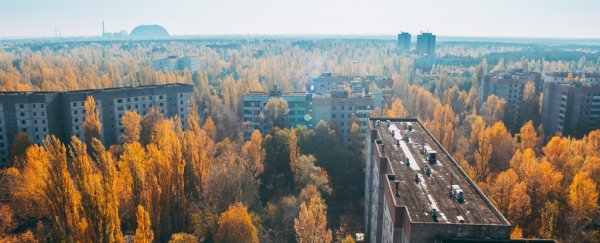In 1986, the Chernobyl nuclear power plant in Ukraine became the site of the biggest nuclear accident in history when one of its four reactors exploded.
At the time, investigation and analysis concluded that a steam explosion was the cause, and that's been the accepted explanation ever since. But now a team of researchers has concluded otherwise.
Several events happened on the morning of 25 April 1986 that contributed to the disaster. Operators were running the reactor at low power, at which it was unstable, and without the proper safety precautions.
At the time, the reactors had something called a positive void coefficient, which means that when the water coolant turned to steam or was otherwise lost, power output could increase.
Workers at the plant were trying to conduct an experiment to create a positive feedback loop, whereby power would create steam, which would create power.
However, the reactor's automatic control system interfered, inserting control rods and keeping the power level low.
For reasons that aren't entirely known, someone initiated an emergency shutdown. This initiated full insertion of the control rods - the graphite tips of which displaced the water coolant, and caused a dangerous power surge, creating more steam.
This increase in steam pressure and heat ruptured the pressure tubes containing fuel. It is thought that this is when the first steam explosion took place, blowing the roof off the reactor and releasing radioactive material into the atmosphere. A second explosion took place a few seconds later.
But according to nuclear physicist Lars-Erik De Geer and his team from the Swedish Defence Research Agency, the Swedish Meteorological and Hydrological Institute, and Stockholm University, that first explosion was far more likely to have been nuclear.
If correct, their findings contradict previous assurances that no nuclear power plant has ever had a nuclear explosion, or that such an explosion would be "impossible."
The two explosions shot radioactive material into the air, where wind carried it to spread across Europe.
In 1986, researchers from the Leningrad-based VG Khlopin Radium Institute found fallout from the explosion at the Russian town of Cherepovets, 370 kilometres (230 miles) north of Moscow and 1,000 kilometres (621 miles) north of Chernobyl, in the form of xenon isotopes.
But Cherepovets is outside the path of the known Chernobyl contamination spread. According to De Geers and his team, if a nuclear explosion had occurred at the plant, this could have shot material higher than a steam explosion - an altitude of up to 3 kilometres (1.86 miles), into higher weather patterns moving towards Cherepovets.
The VG Khlopin Radium Institute scientists analysed these isotopes and found that they had been recently produced, and at least partially by nuclear fission - which indicates a nuclear explosion.
Examination of the reactor also revealed that the explosion had melted through a 2-metre (6.6 feet) thick steel plate underneath the core. According to De Geer's team, that's also consistent with a nuclear explosion, and not with a steam explosion.
And an eyewitness, a local fisherman, reported seeing a blue flash above the reactor - again, consistent with a nuclear explosion.
It even fits with the previous version of events. If, when the cores were reinserted, one or two of the fuel elements got a reactivity boost from the close proximity from the graphite, that could have triggered the first explosion. Then the power surge would have peaked, and the steam exploded.
It's likely that we're never going to know exactly what happened in that reactor. The Chernobyl power plant was of a type known as RBMK, and their design has already been improved to prevent other disasters. But, De Geer said, there's always room to learn.
"Our new theory deepens the understanding of the severe effects that can be the result of some original design faults in such reactors," he told FOX News.
"Much has been corrected in remaining RBMK reactors, but a better understanding of what really happened in 1986 must of course be of great value for overseeing and possibly improving the design also in the future."
The research was published in Nuclear Technology.
